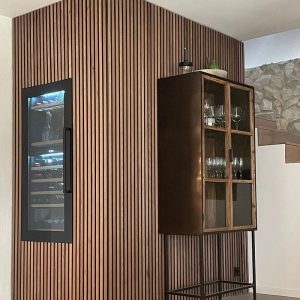
When planning a relocation, choosing the right moving company can make all the difference between a smooth transition and a stressful experience. Whether you’re moving within California or across the state, having professionals handle your belongings ensures safety, efficiency, and peace of mind, go to Perris Movers is one such trusted source for reliable and affordable moving services in the Perris area. Known for their dedication to customer satisfaction, they offer a wide range of moving solutions, from local residential moves to long-distance relocations. With a strong focus on professionalism and care, Perris Movers have earned a solid reputation for helping families and businesses move seamlessly.
On the other hand, sanramonmovers.com stands out as a premier moving company serving San Ramon and the surrounding areas. This company specializes in personalized moving services designed to fit every client’s unique needs. Whether it’s packing delicate items, transporting large furniture, or managing office relocations, San Ramon Movers provide expert handling at every stage of the process. Their team understands the importance of punctuality, communication, and attention to detail, ensuring that every move is stress-free and well-coordinated.
Local Expertise That Makes a Difference
Both Perris Movers and San Ramon Movers offer the advantage of local expertise. Perris Movers are well-acquainted with Riverside County neighborhoods, making navigation and logistics smoother for local moves. They know the best routes, local regulations, and common challenges in the area an advantage that helps ensure timely delivery and reduced risk of delays.
Similarly, San Ramon Movers have in-depth knowledge of Contra Costa County. They understand the unique characteristics of the area, from narrow residential streets to busy commercial zones. This familiarity enables them to handle moves efficiently, minimizing disruptions for clients while keeping the process organized and efficient.
Comprehensive Moving Services
When comparing Perris Movers and San Ramon Movers, both companies offer a broad range of services that go beyond just loading and unloading. They provide full-service packages that include:
Packing and Unpacking: Both companies use high-quality packing materials to protect fragile items and valuables during transit.
Residential and Commercial Moves: Whether you’re relocating a household or an office, each company tailors its approach to suit your needs.
Long-Distance Moves: Both are equipped to handle interstate or cross-country relocations, ensuring your belongings reach their destination safely.
Storage Solutions: For clients needing temporary storage, both companies offer secure, climate-controlled facilities.
Furniture Disassembly and Assembly: Movers are trained to carefully dismantle and reassemble furniture, ensuring it arrives in perfect condition.
For anyone planning a move, it’s important to verify the legitimacy of moving companies. You can check their licensing and safety information directly from the (FMCSA). This ensures your movers meet federal standards and helps you avoid fraudulent or unlicensed providers.
Customer Service and Professionalism
The hallmark of a great moving company lies in its customer service. Perris Movers prioritize transparent communication from start to finish. Their team provides detailed estimates, ensuring there are no hidden fees. Customers appreciate their courteous staff, prompt responses, and commitment to punctuality.
San Ramon Movers share this dedication to customer satisfaction. Their movers are known for being respectful, efficient, and highly trained. They go the extra mile to accommodate special requests, such as handling antiques, pianos, or other sensitive items. Online reviews frequently praise their professionalism and reliability, making them one of the most trusted movers in the East Bay region.
Cost and Value Comparison
While both companies offer competitive pricing, the value they provide goes far beyond cost. Perris Movers are known for their affordability and flexible service options, making them an excellent choice for budget-conscious clients without compromising quality. Their straightforward pricing structure helps customers plan ahead without worrying about unexpected expenses.
San Ramon Movers, while slightly higher in price, provide premium services that justify the cost. Their attention to detail, top-notch packing materials, and highly skilled movers ensure that every relocation is handled with care. For clients seeking peace of mind and convenience, this level of service is often worth the investment.
Final Thoughts
In conclusion, both Perris Movers and San Ramon Movers provide exceptional moving services that cater to different needs and budgets. If you’re in the Riverside County area, Perris Movers offers a reliable and cost-effective choice with personalized service and local expertise. For those in the East Bay area, San Ramon Movers delivers premium moving experiences with a focus on precision, care, and professionalism.







